By Louise Irvine
As part of the Great WMODA Pack-up, the museum team has been ensuring that every object in the collection is cataloged so that it can be tracked to its future location. This intensive research project has revealed some interesting discoveries. For example, this monumental terracotta sculpture of St. Paul the Apostle by George Tinworth has now been identified as part of the altarpiece presented to St. Mary’s parish church in Lambeth by Sir Henry Doulton.
The altar screen was designed by the distinguished architect, Sir Arthur Blomfield, as a memorial to Sir Henry’s father, John Doulton, the founder of the Doulton Potteries. George Tinworth modeled the central terracotta panel of the crucifixion and relief figures of Moses, Elijah, Peter, and Paul for the triptych. An entry in the diary kept by Tinworth’s wife records that he started work on the project on March 1, 1888 and she mentions the panels again in April. On October 12, Tinworth went to see his work in the church and two weeks later Lady Doulton died. The terracotta memorial also commemorates Sarah Kennaby Doulton, Sir Henry’s wife of nearly 40 years.
I first saw Tinworth’s crucifixion panel in 1977 when I was researching the Doulton Story exhibition for the Victoria & Albert Museum. I discovered that St. Mary’s church had been bombed in 1941 during the Second World War and the altar screen was badly damaged. The crucifixion panel was salvaged and can still be seen at St. Mary’s which is now the Garden Museum.
St. Mary’s church was deconsecrated in 1972 and demolition was imminent when Rosemary and John Nicholson visited the site to see the tomb of John Tradescant, the 17th century plant hunter and gardener. They were shocked at the neglect and established the Tradescant Trust, beginning a massive architectural conservation project to create the world’s first Museum of Garden History. The Garden Museum is a tranquil oasis in the heart of London and it also serves the community as St. Mary’s Eco Church in response to the climate emergency and biodiversity crisis.
St. Mary’s has been prominent in London’s history since the 11th century due to its proximity to Lambeth Palace, the official residence of the Archbishop of Canterbury. The Doulton Lambeth Pottery was also located nearby on the Thames riverfront hence the association with Sir Henry Doulton and the studio’s most famous sculptor, George Tinworth. His terracotta panel of the Doulton artists at work can still be seen on the surviving studio building in Lambeth High Street.
George Tinworth was the son of a poor wheelwright and his destiny changed when he became aware of the Lambeth School of Art. He pawned his overcoat to attend classes in 1861 when he began training as a sculptor. He gained admittance to the Royal Academy Schools where he won medals for his sculptures and Henry Doulton gave him his first professional job in 1866. In the early years, Tinworth modeled terracotta statues including a portrait of John Doulton and decorated many salt-glazed stoneware vases.
By the 1870s, Tinworth was creating major works of art for the international exhibitions of the period, including the Centennial Exhibition in Philadelphia, which attracted the attention of illustrious critics such as John Ruskin. Tinworth’s Doulton career prospered with annual commissions for churches and public buildings at home and abroad. He was a devout Christian and the bible provided him with most of his inspiration. He sculpted hundreds of “sermons in terracotta” and was still working in Lambeth until the day he died on route to the Doulton studio in 1913.
One of Tinworth’s rare secular subjects, The Sons of Cydippe, tells the story of the Greek goddess. Tinworth was inspired by a poem written by Sir Edmund Gosse and modeled the terracotta panel in his honor. The subject adorned the fireplace of Sir Henry Doulton’s home at Woolpits in Surrey and it is now in Arthur Wiener’s private collection.
One of Tinworth’s monumental masterpieces The Taking of Samson is a favorite with visitors at WMODA. The scrawled subtext “What to expect if you get into bad company”, referring to Delilah, gives us an idea of the artist’s sense of humor. The light-hearted side of Tinworth’s personality can be seen also in the little stoneware mice groups that he modeled in his spare time. He imagined the mice that overran his studio in entertaining human situations. An autobiographical piece shows Tinworth and his father working as wheelwrights.
It is not known how Tinworth’s statue of St. Paul came to be in America although I first noticed it changing hands at the Ohio Doulton show in 2007. Arthur Wiener acquired it at auction in 2019 and it piqued my curiosity when we started packing the collection. The terracotta panel depicts Paul, the apostle with scrolls symbolizing his influential letters. Of the 27 books in the New Testament, 13 are attributed to Paul. Tinworth has cited 2 Corinthians 11:22 where Paul asserts his Hebrew heritage and he has also included an appropriate memorial quote from 2 Timothy 4:7 “I have fought the good fight, I have kept the faith.”
I wonder whether any other statues have survived from the altarpiece and look forward to hearing whether Moses, Elijah or Peter still exist in private collections? If you are visiting London, there are other examples of Tinworth’s work to view in St. Mary’s Church including a memorial to John Hernaman who was headmaster for the boys’ school in Lambeth. A few blocks away, the chapel in St. Thomas’ Hospital has a terracotta triptych above the altar which is a memorial to Sir Henry Doulton as well as a panel of The Good Samaritan in memory of a long-serving matron at the hospital.
Read more about George Tinworth...
Find out more about the Garden Museum at St. Mary’s
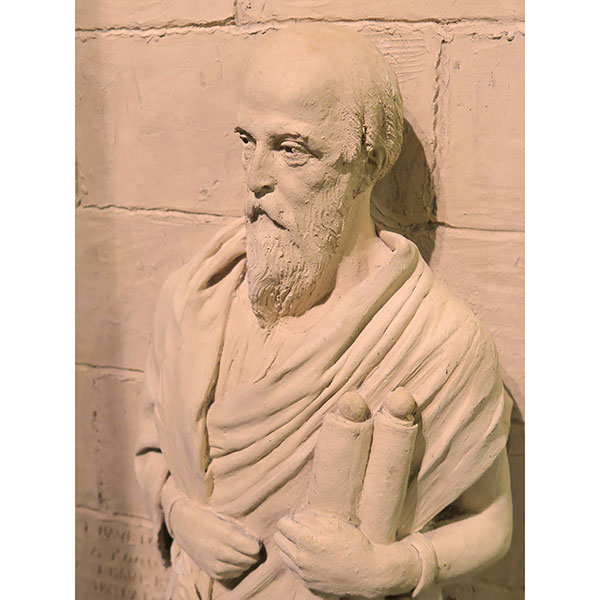
St. Paul detail

St. Mary at Lambeth
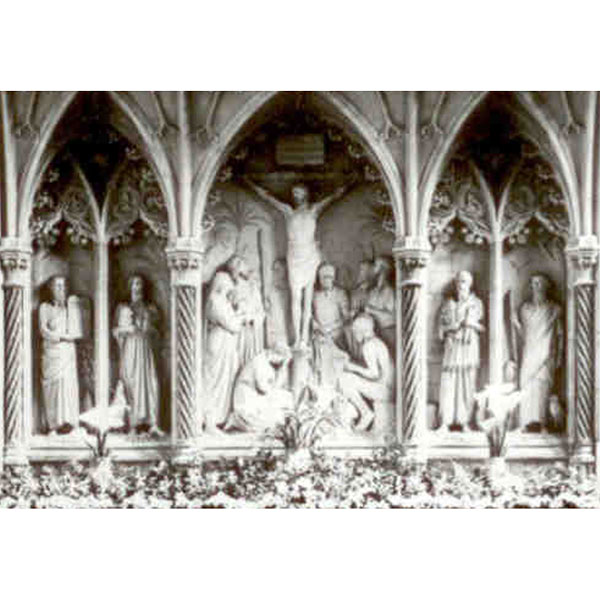
Reredos Detail St. Mary's Lambeth

St. Mary's Parish Church Lambeth Doulton Memorial

Crucifixion G. Tinworth at Garden Museum
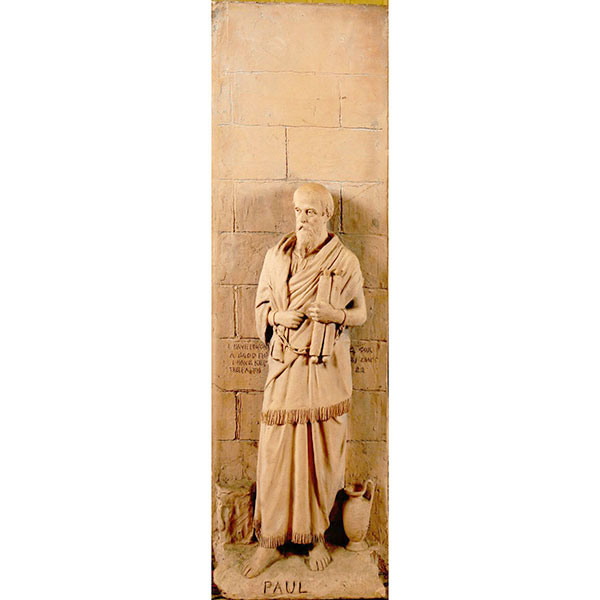
St. Paul

Lady Doulton nee Sarah Kennaby

When I Was a Wheelwright G. Tinworth
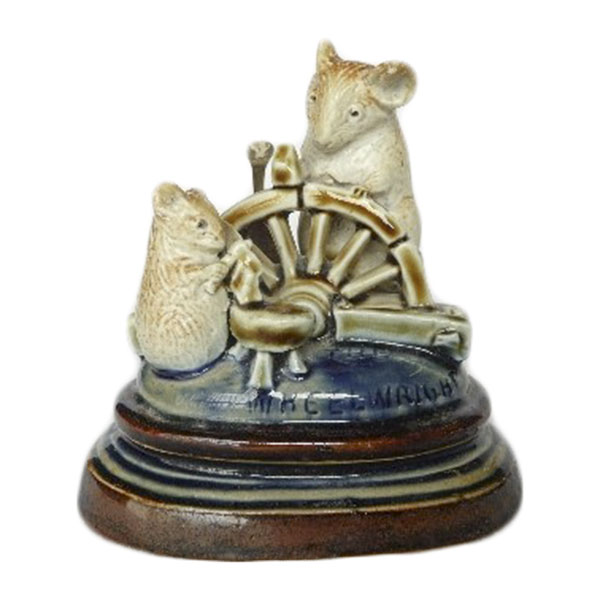
Wheelwright Mouse Group G. Tinworth
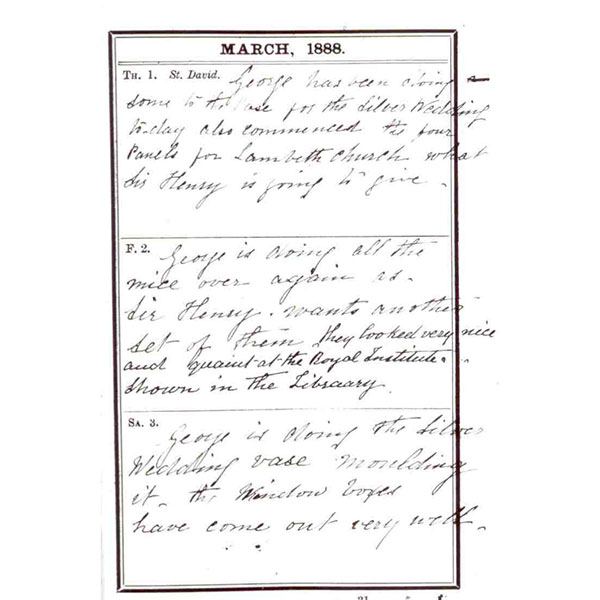
Tinworth Diary
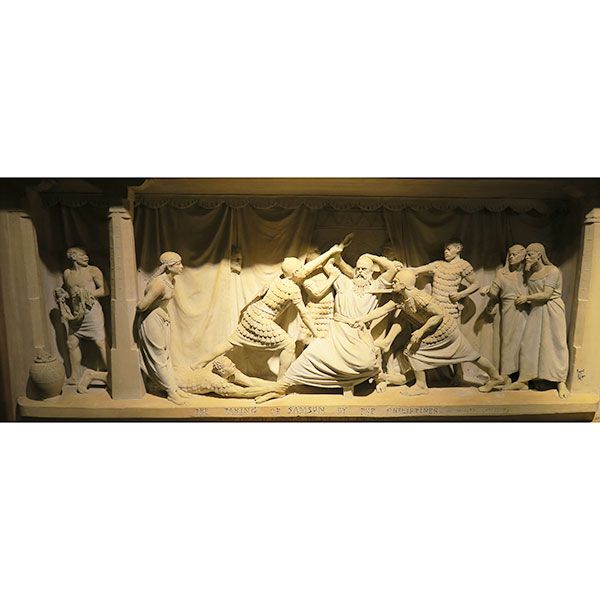
The Taking of Samson G. Tinworth
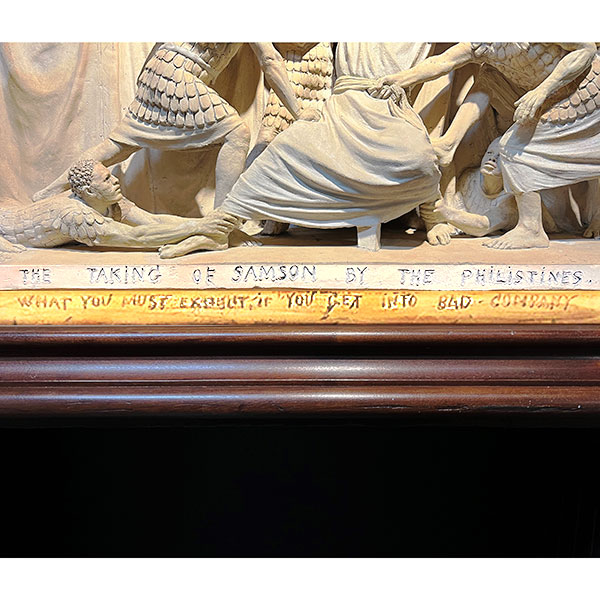
Taking of Samson Inscription
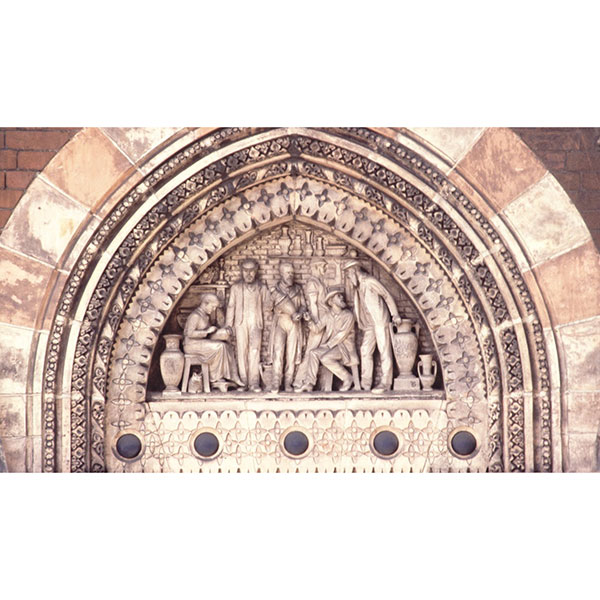
Doulton Studio G. Tinworth
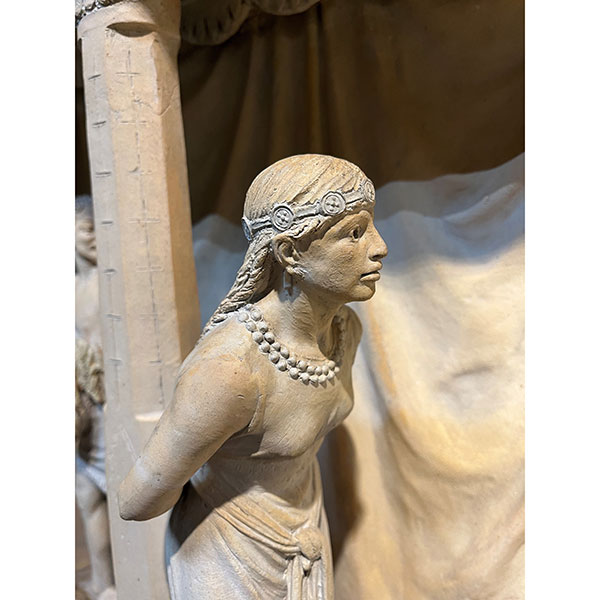
Delilah from Taking of Samson

Delilah from Taking of Samson

George Tinworth
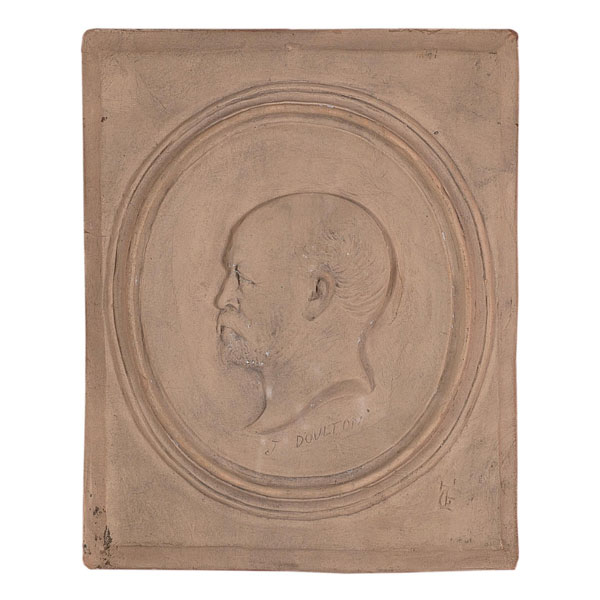
John Doulton G. Tinworth
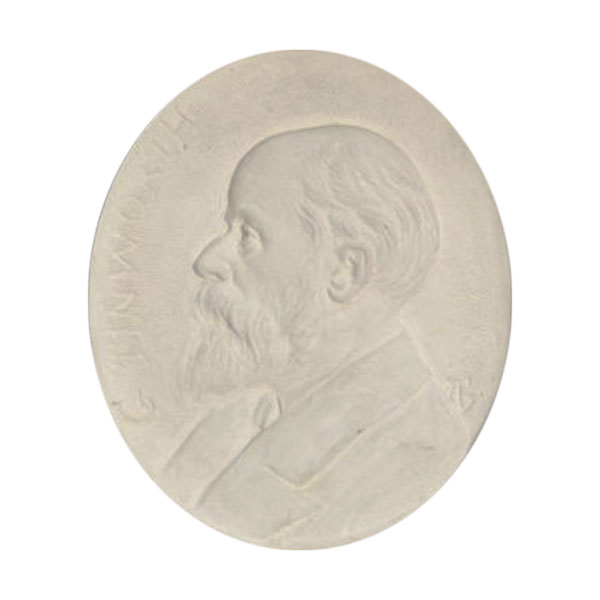
George Tinworth Terracotta Self Portrait

George Tinworth
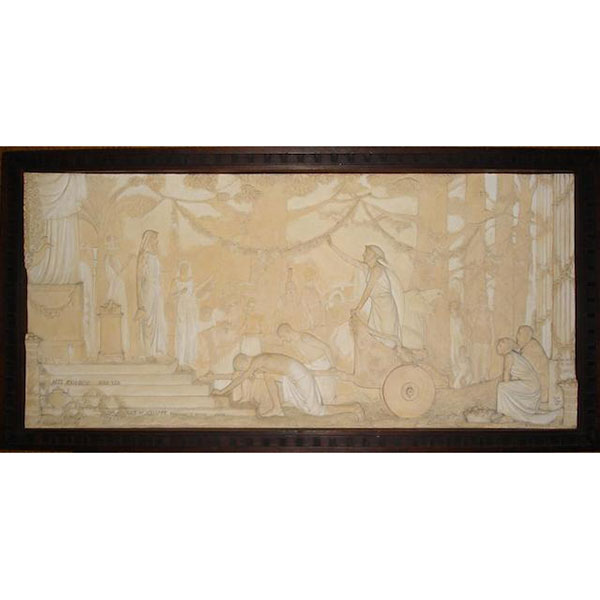
Sons of Cydippe G. Tinworth

Tinworth Terracotta Panel Woolpits Drawing Room
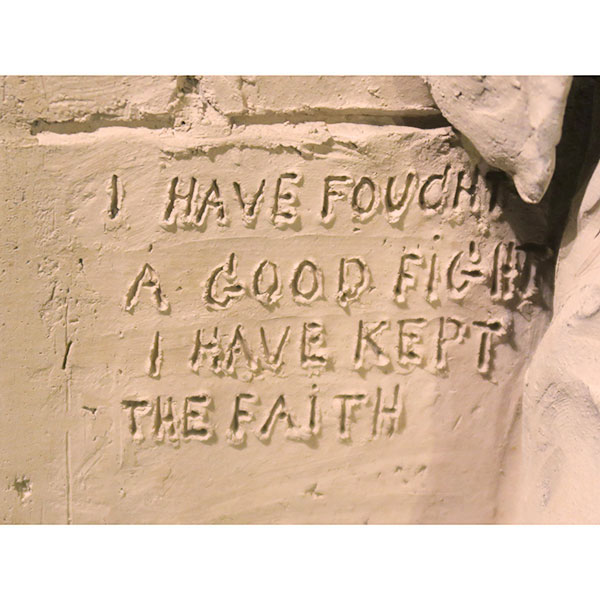
St. Paul detail
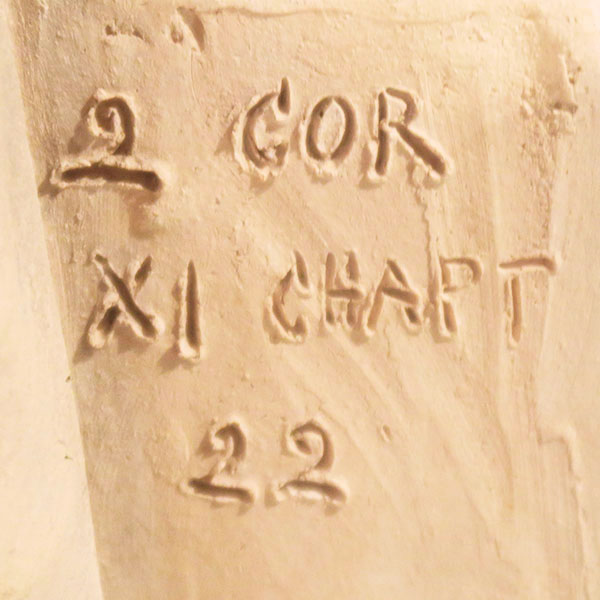
St. Paul detail
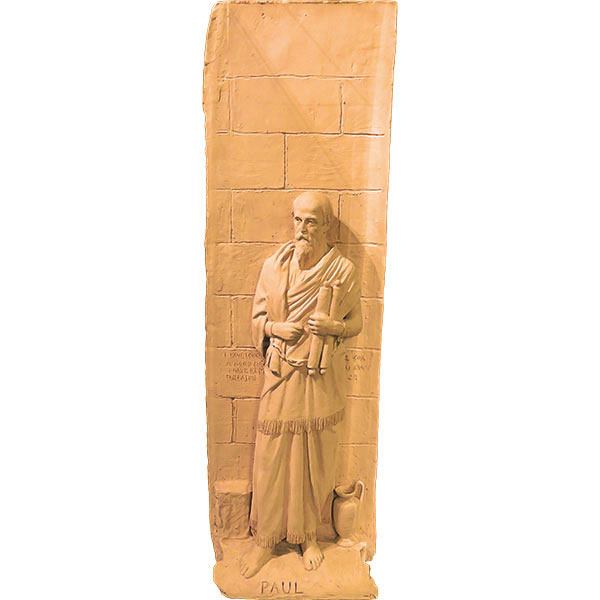
St. Paul G. Tinworth
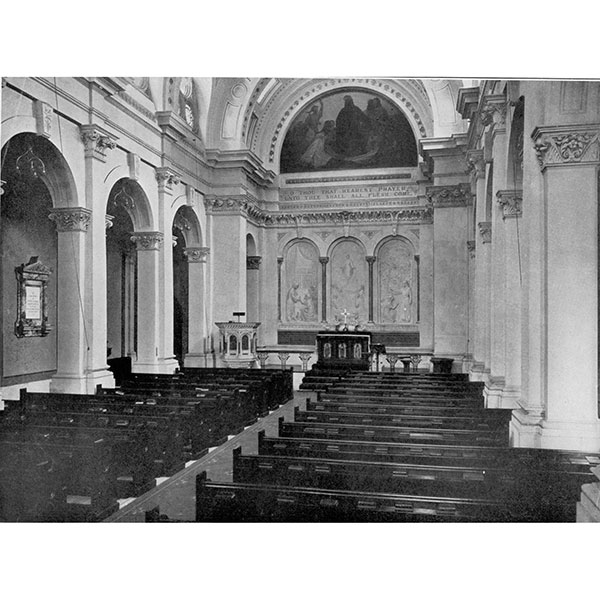
St. Thomas' Hospital Chapel London

Good Samaritan St. Thomas' Hospital
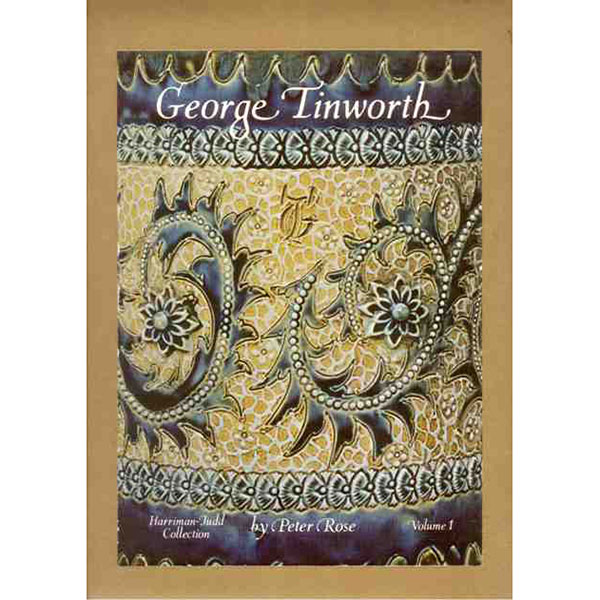
George Tinworth Book
